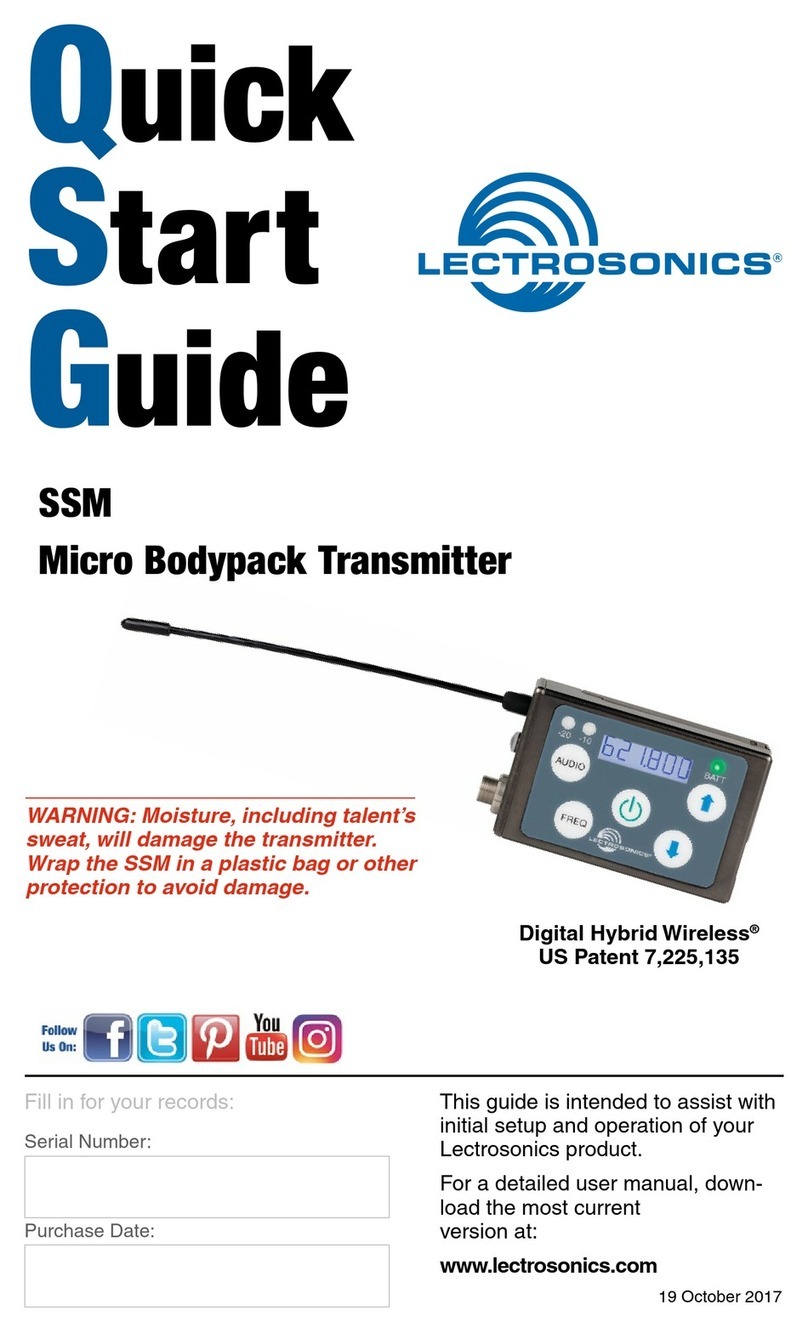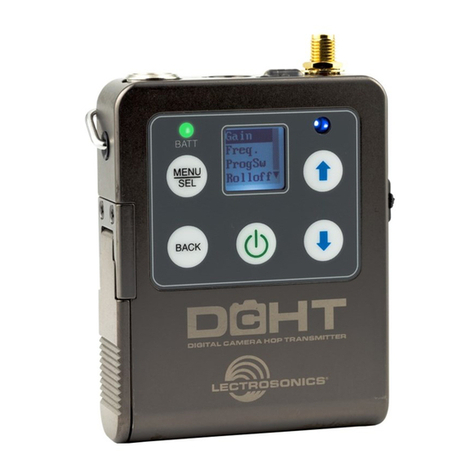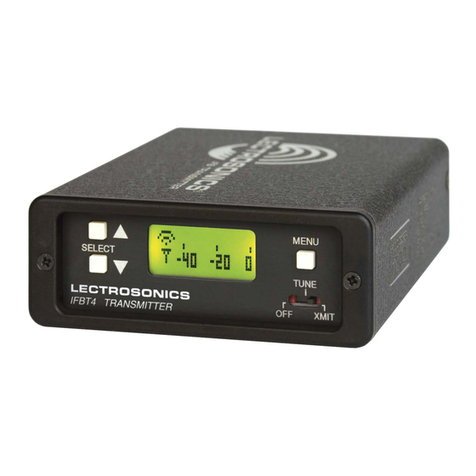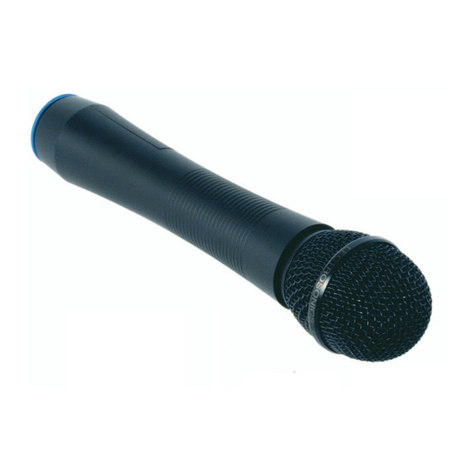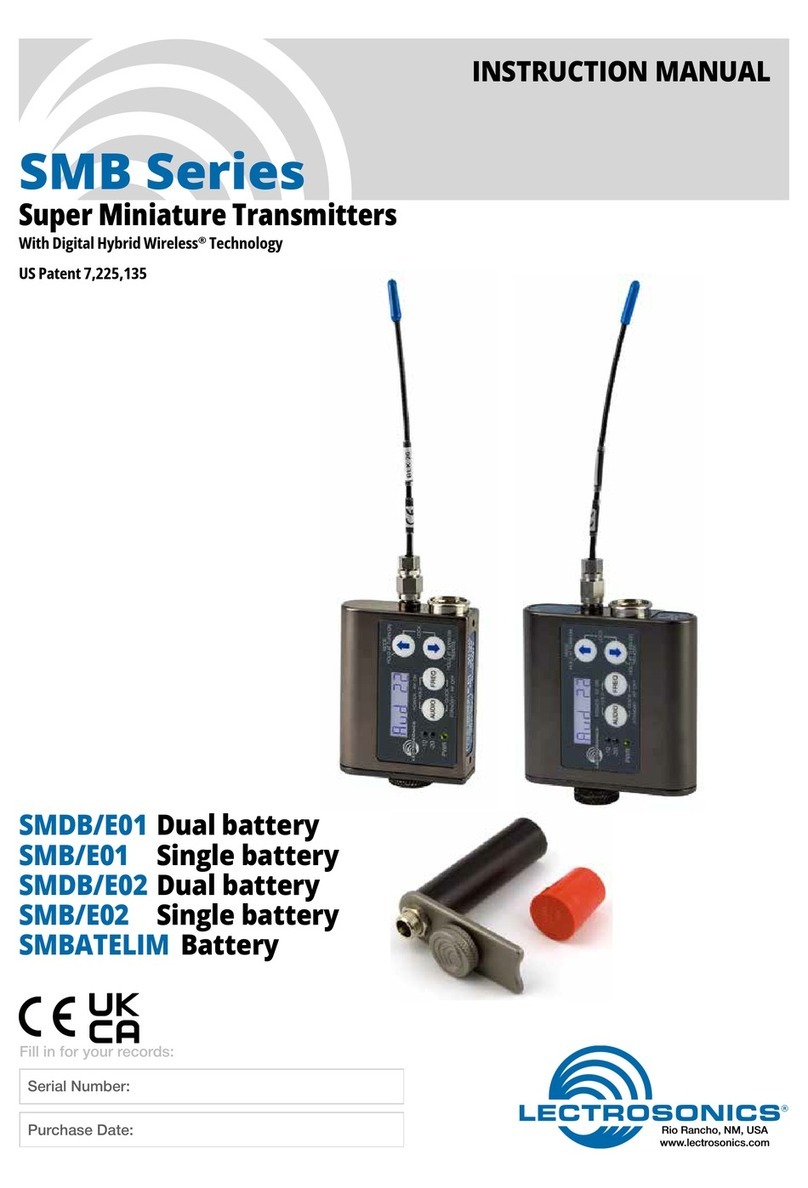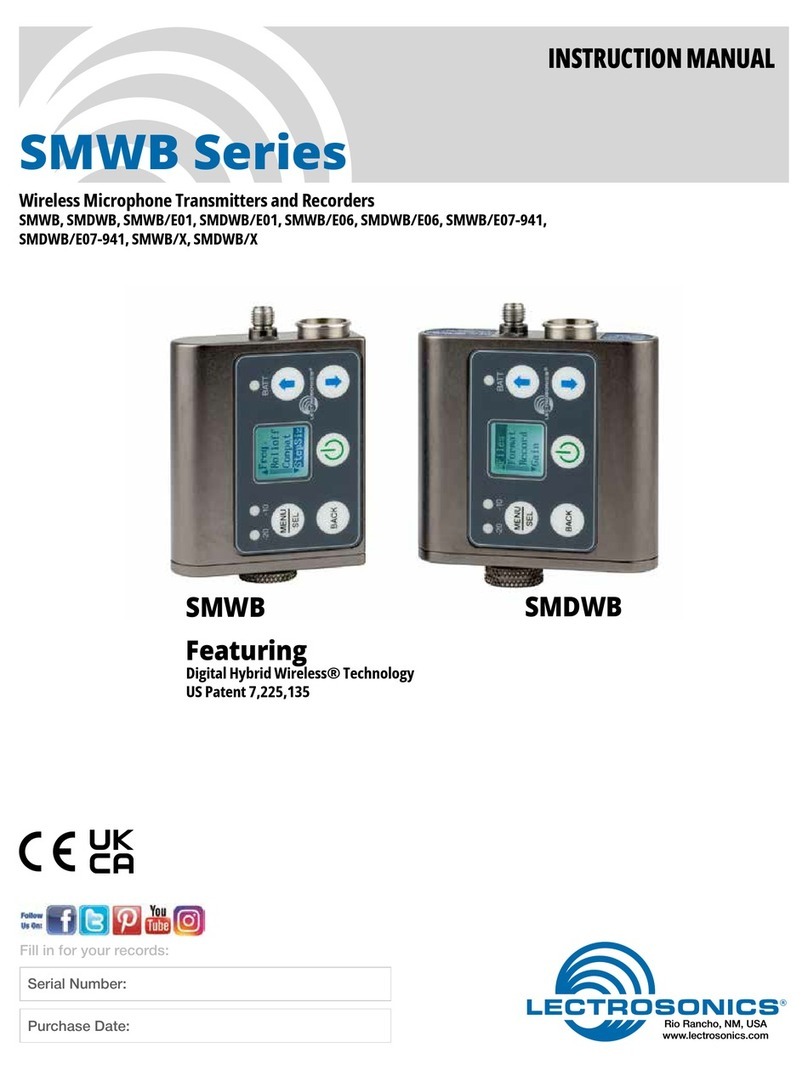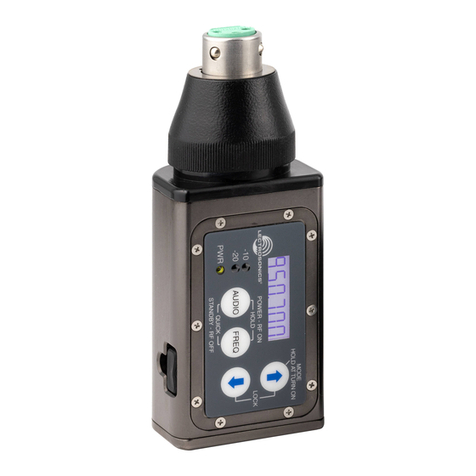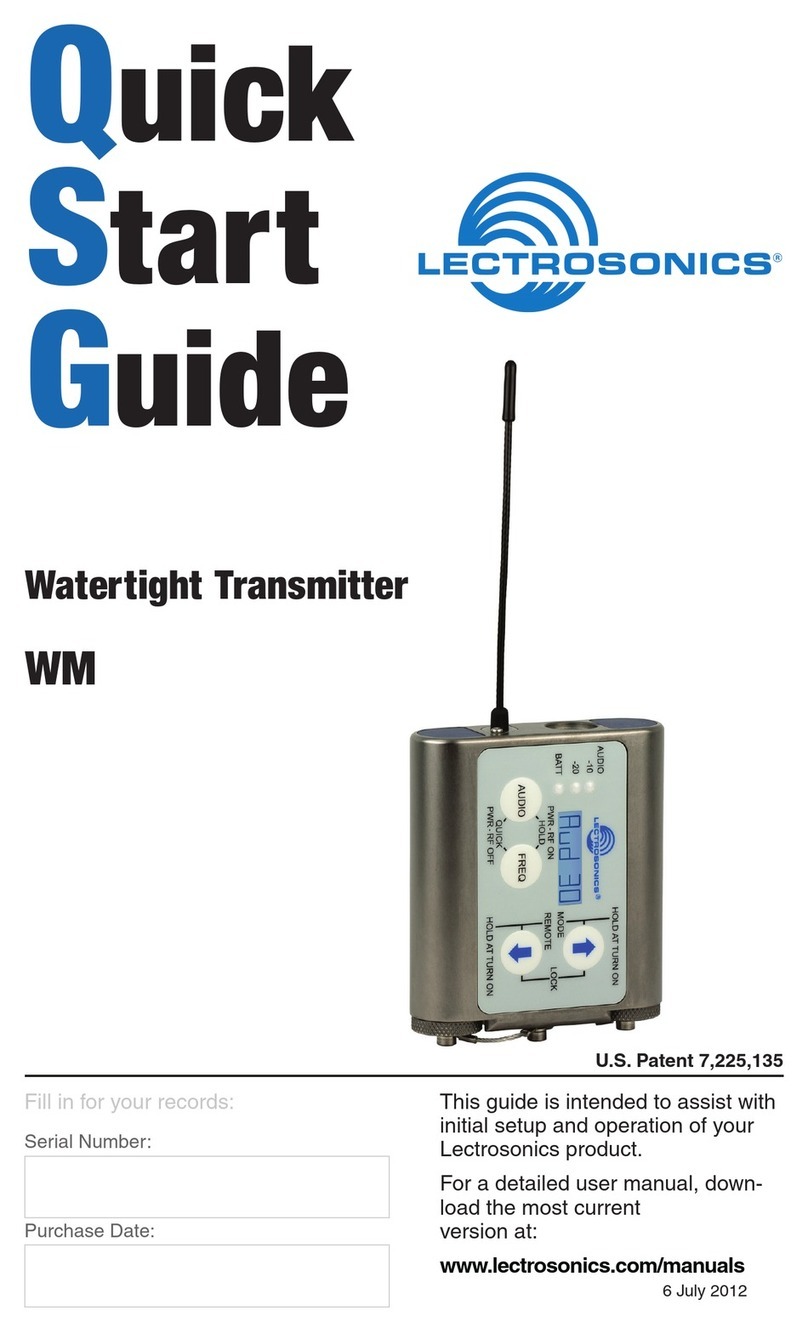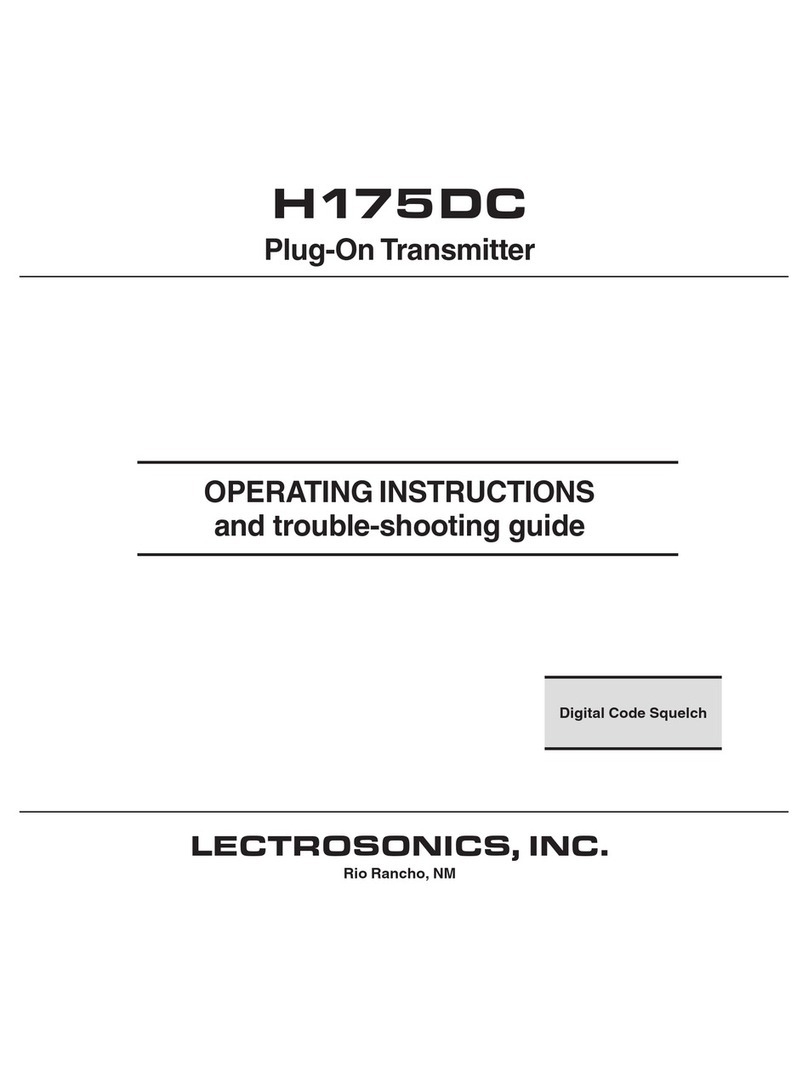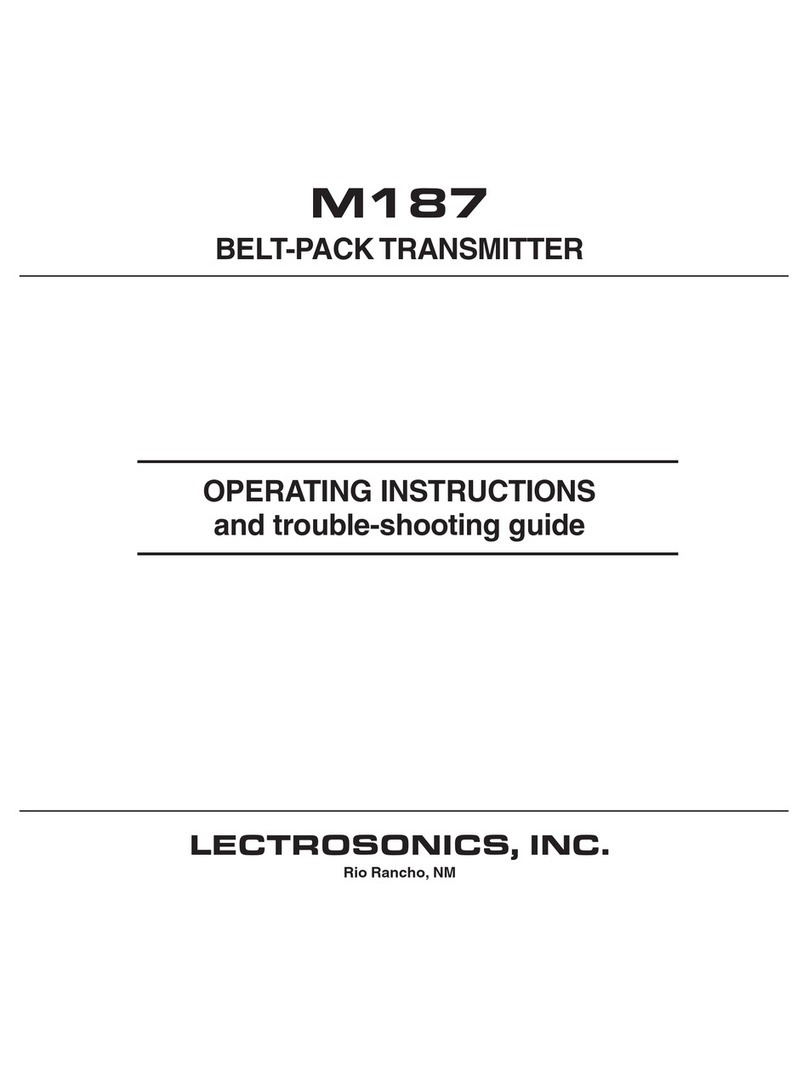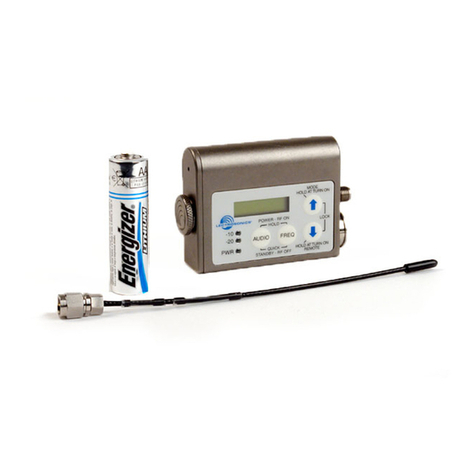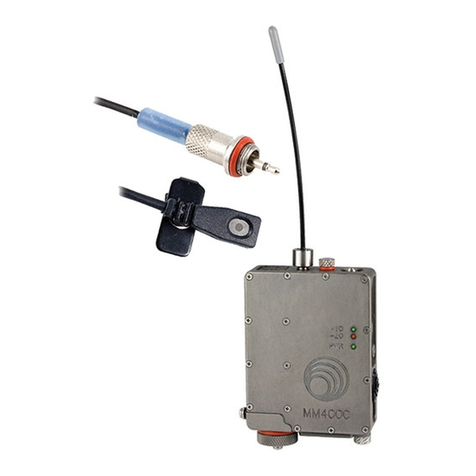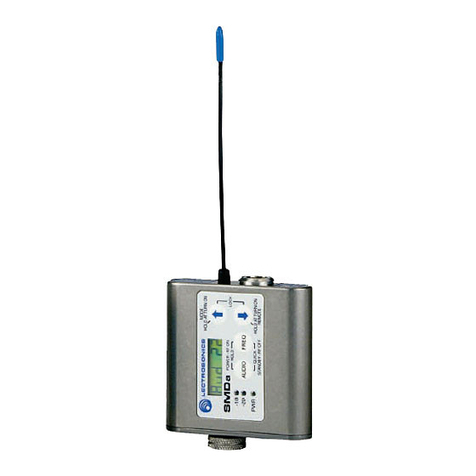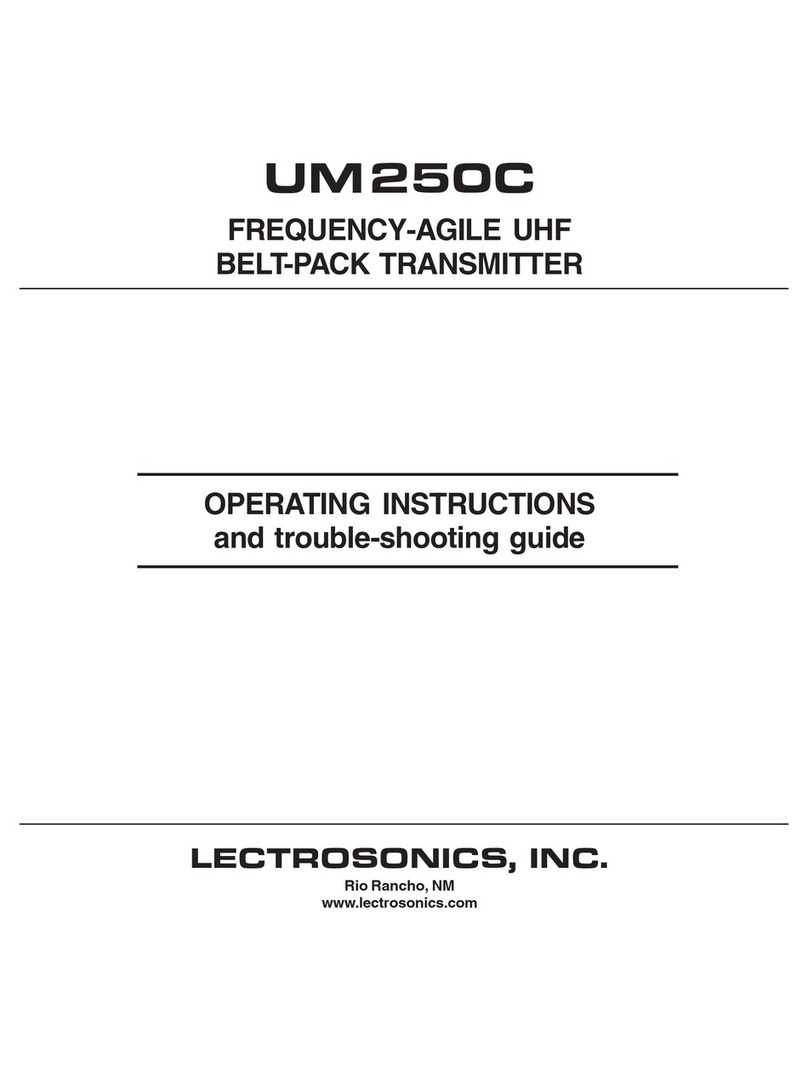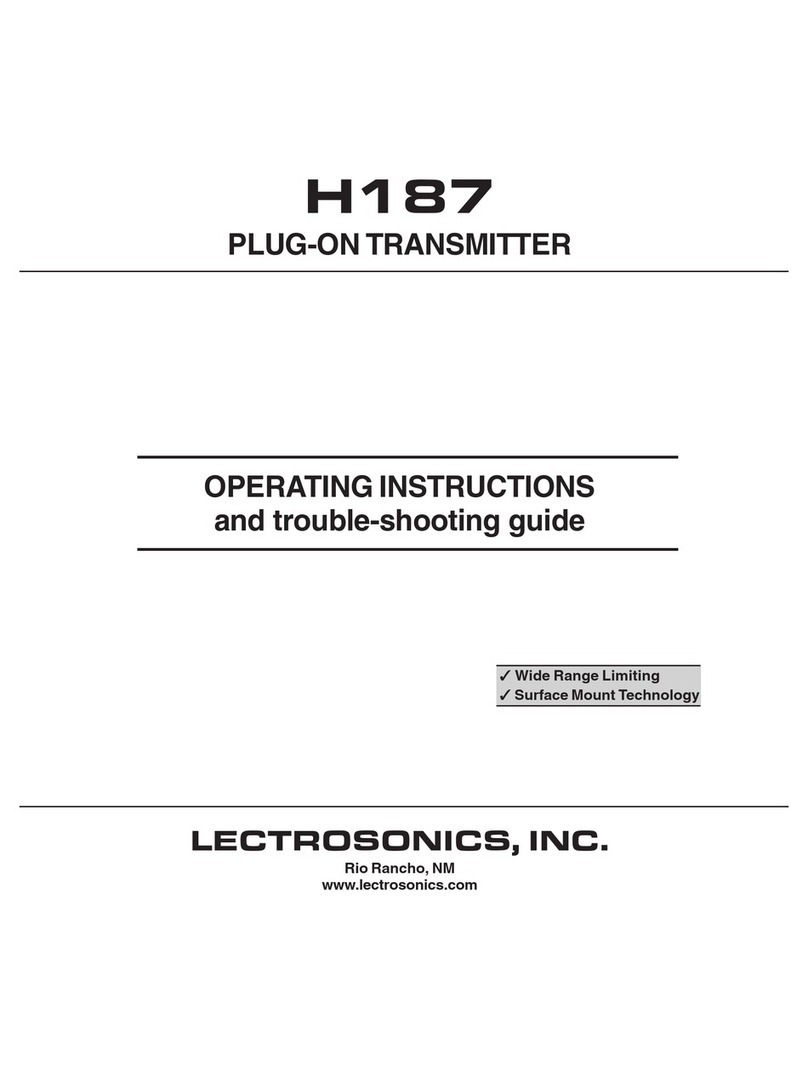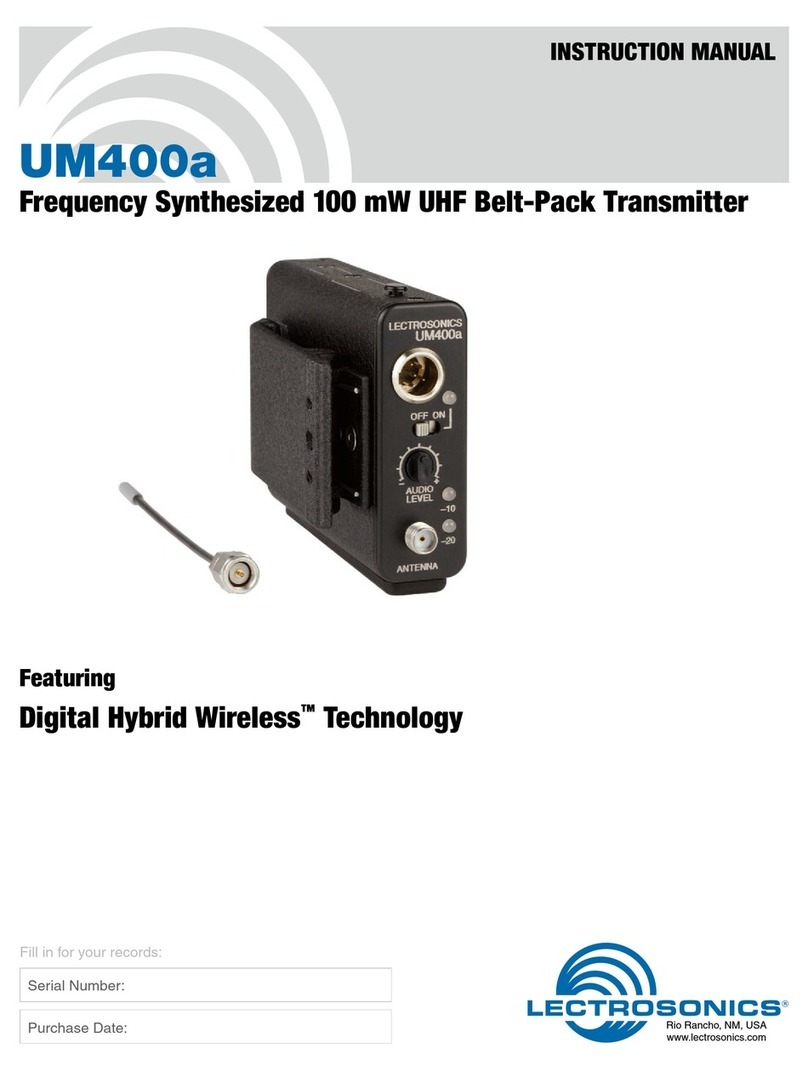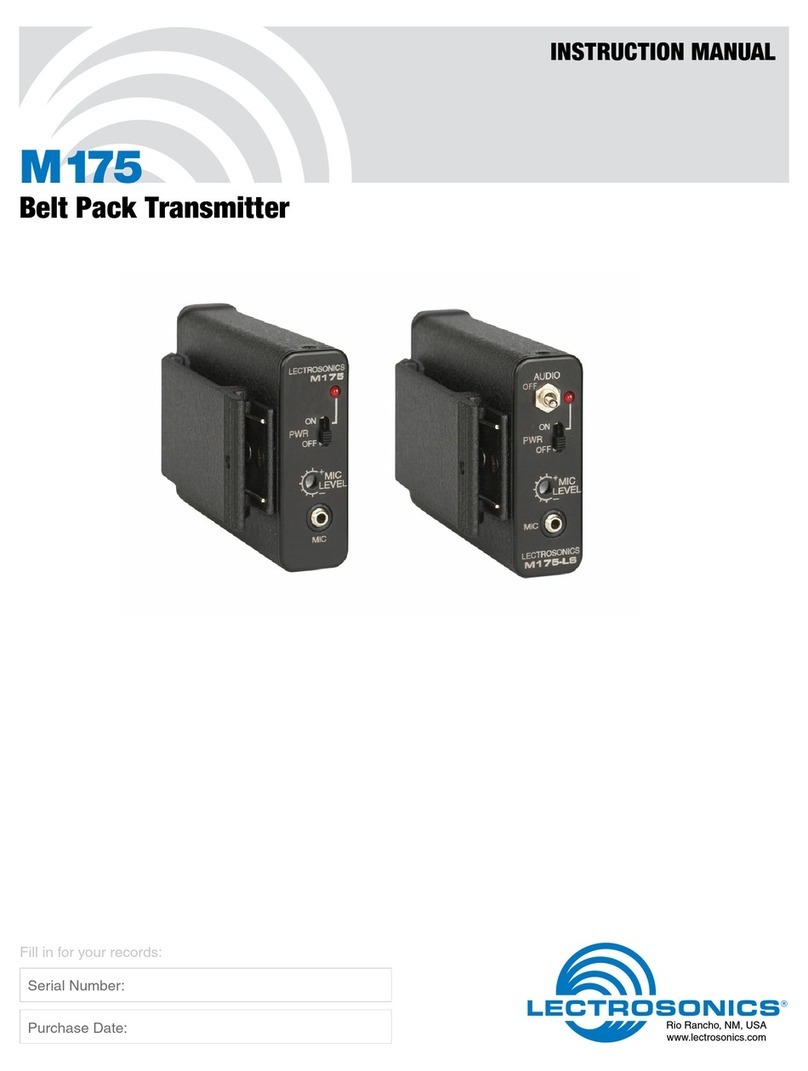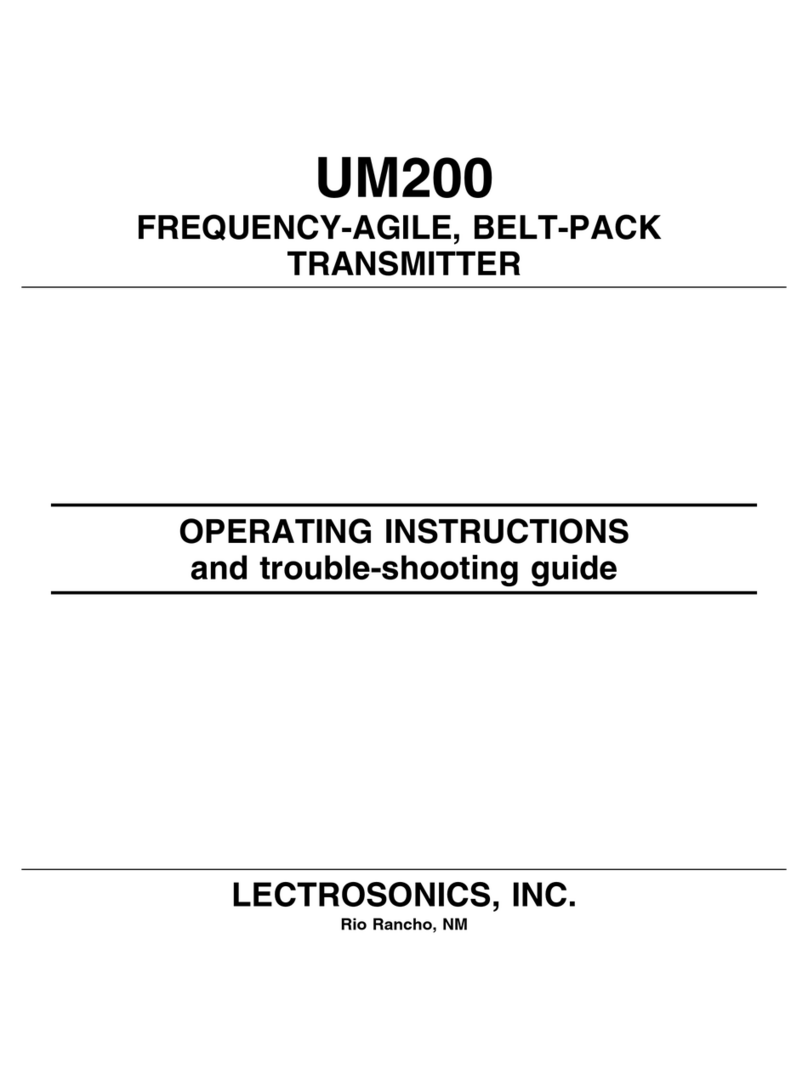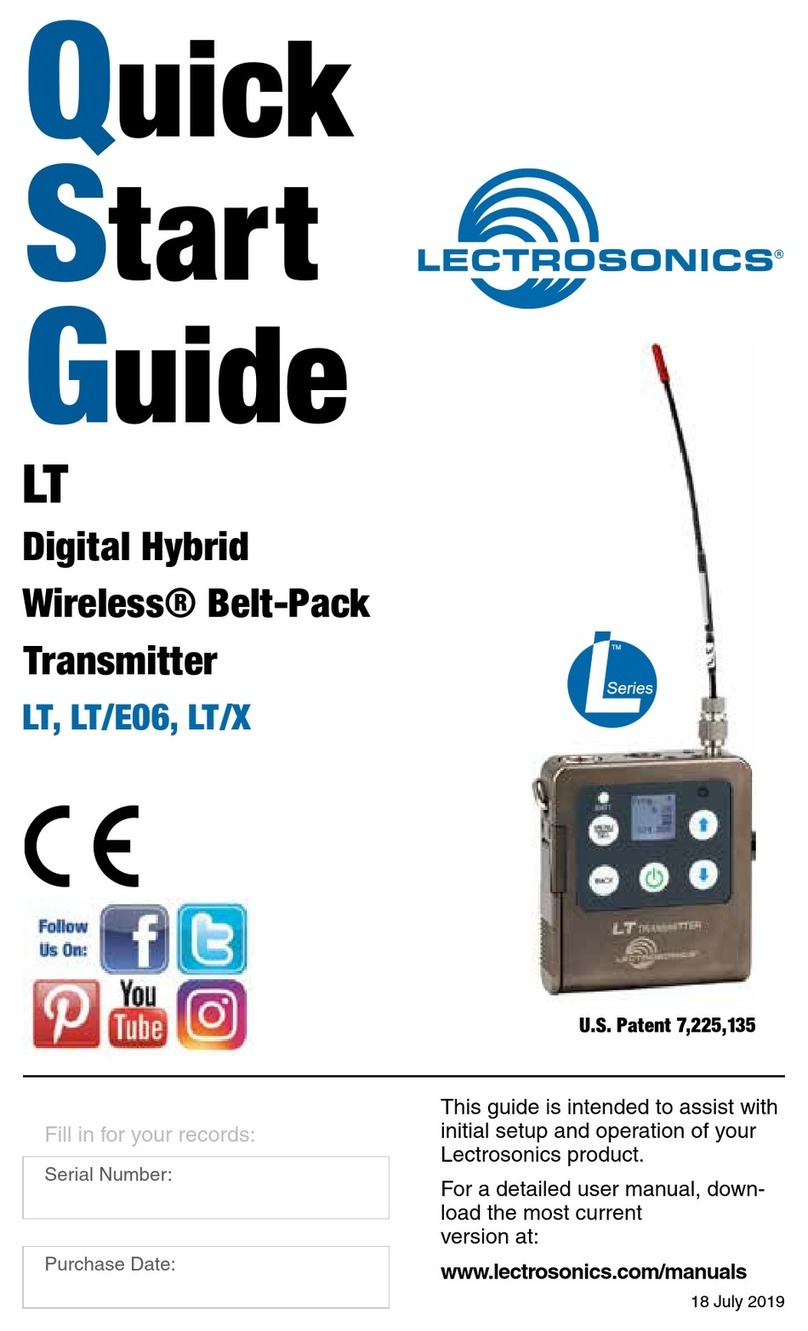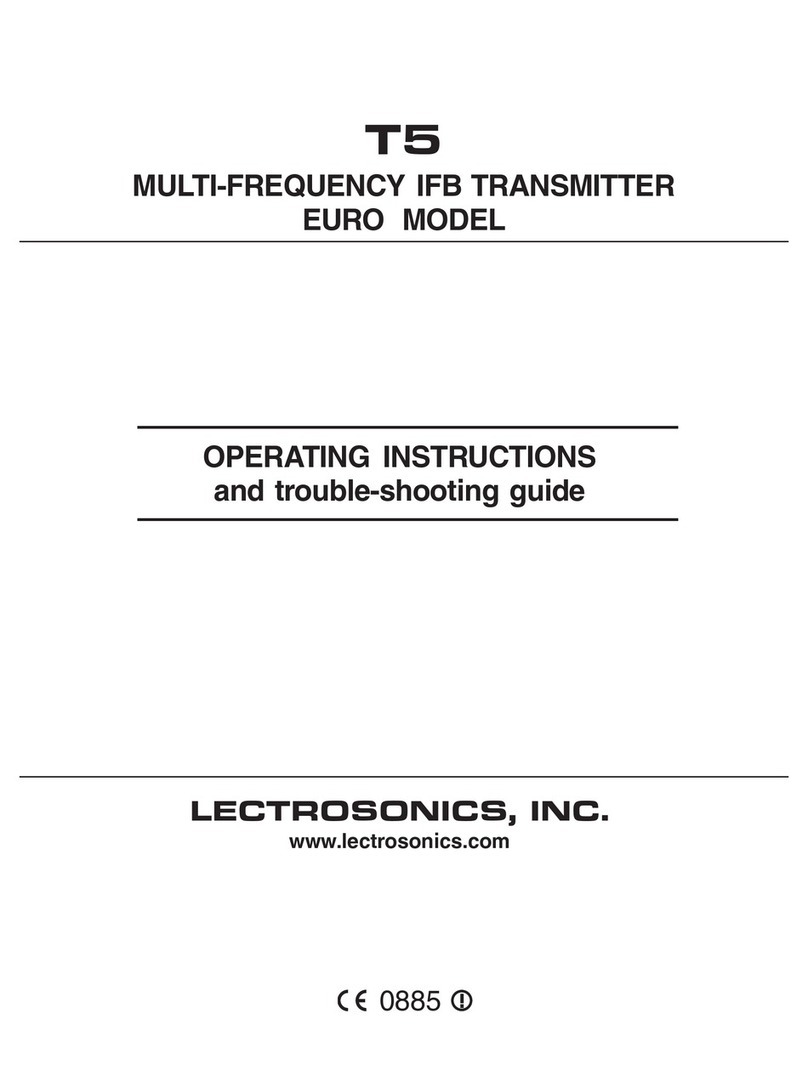
Frequency Agile Plug-On UHF Transmitter
Rio Rancho, NM 5
Input Limiter
The 400 series transmitters employ a digitally-controlled
analog audio limiter just before the analog-to-digital
converter. The limiter has a range of more than 30 dB
for excellent overload protection. A dual release
envelope makes the limiter acoustically transparent
while maintaining low distortion. It can be thought of as
two limiters in series, connected as a fast attack and
release limiter followed by a slow attack and release
limiter. The limiter recovers quickly from brief tran-
sients, so that its action is hidden from the listener, but
recovers slowly from sustained high levels, to both keep
audio distortion low and preserve short term dynamic
changes.
The Modulation LEDs indicate limiter activity. When the
-20 LED glows red and the -10 LED glows green with
occasional red flickers, this indicates that the limiter is
active and that the transmitter is fully modulated (audio
level is between +0 and +10 dB). When the -10 LED
glows solid red, this indicates that the level is +10 dB or
more into limiting. Occasional forays by the -10 LED
into the red are desirable for most applications, since
the distortion introduced by the limiter is so minimal and
full modulation is thus assured. We strongly recom-
mend setting the audio level of the transmitter high
enough so that the -10 LED occasionally flickers red.
Generally speaking, some limiting is desirable in normal
operation to improve the signal to noise ratio of the
system. The limiting action is not audible and does not
create distortion. A highly trained ear would hear only
the compression of the peaks in the audio signal, which
is desirable with most recorders and many sound
reinforcement systems.
No Pre-Emphasis/De-Emphasis
The signal to noise ratio of the 400 system is high
enough to preclude the need for conventional pre-
emphasis (HF boost) in the transmitter and de-empha-
sis (HF roll off) in the receiver. Pre-emphasis and de-
emphasis in an FM radio system usually provides about
a 10 dB improvement in the signal to noise ratio of the
system, but the high frequency boost in the transmitter
must be removed in a purely complementary manner or
else the frequency response of the original audio signal
will be altered.
Pre-emphasis can also cause distortion in the receiver.
As this signal is passed through the IF filters in the
receiver, distortion can be produced, most noticeably at
full modulation. De-emphasis cannot be applied until
the signal is converted into audio, so there is no way
around this problem short of eliminating pre-emphasis
altogether. Neither of these problems occur in the 400
system
Pilot Tone Squelch
The 400 system uses one of 256 different ultrasonic
tones between 25 and 32 kHz, that modulate the carrier
to operate the receiver squelch. The pilot tone fre-
quency is chosen according to which of the 256
channels has been selected by the frequency switch
setting. The basic benefit of the pilot tone squelch
system is that the receiver will remain muted until it
receives the pilot tone from the matching transmitter,
even if a strong RF signal is present on the carrier
frequency of the system. The 400 Series insires that all
transmitters in a system have different pilot tone
frequencies so that even spurious RF from the wrong
transmitters can’t open the receiver squelch.
Wide-Band Deviation
A ± 75 kHz deviation improves the capture ratio, signal
to noise ratio and AM rejection of a wireless system
dramatically, compared to the more commonly used ±
15 kHz deviation.
Long Battery Life
Switching power supplies throughout the design allow
over 4.5 hours of operation using a single 9 Volt alkaline
battery. (A 9 Volt lithium battery will provide over 12
hours of operation.) The battery contacts are spring
loaded to prevent “rattle” as the unit is handled.
Frequency Agility
The transmitter section uses a synthesized, frequency
selectable main oscillator. The frequency is extremely
stable over a wide temperature range and over time.
Two rotary switches, located on the side panel of the
unit, provide 256 frequencies in 100 kHz steps over a
25.5 MHz range. This alleviates carrier interference
problems in mobile or traveling applications.
